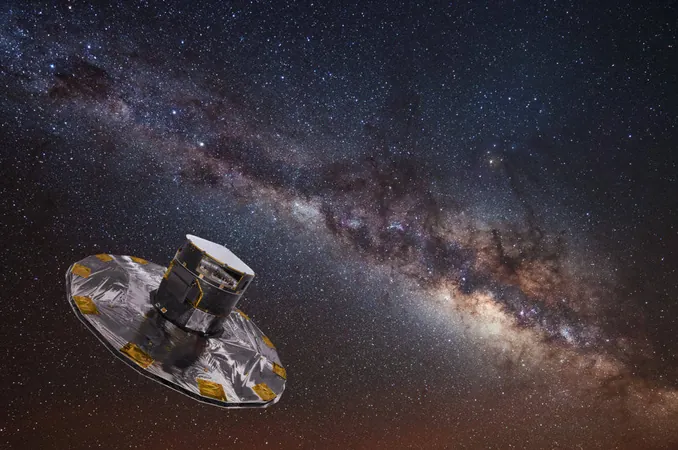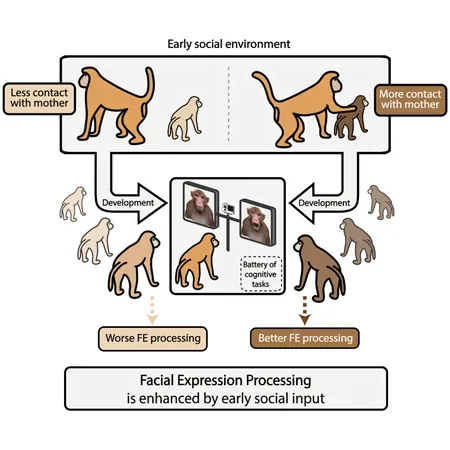
Gaia Satellite Shuts Down After a Stellar Mission: A Legacy of Cosmic Discovery
2025-03-31
Author: Arjun
End of an Era
The European Space Agency (ESA) has officially sent its final commands to the Gaia satellite, marking the end of a remarkable journey that began over a decade ago. Launched on December 19, 2013, Gaia has meticulously scanned our Milky Way galaxy, capturing the movements and positions of stars, planets, and comets. Now, it is gracefully transitioning into a retirement orbit around the Sun, far from Earth's gravitational pull.
Challenges in Shutting Down
Shutting down the spacecraft, however, has proven to be no simple task. Gaia was ingeniously designed with multiple backup systems to withstand challenges such as radiation storms and micrometeorite strikes, which it successfully navigated throughout its operational life. The ESA team, driven by a resolve to prevent any accidental reactivation, has had to devise a careful decommissioning strategy that dismantles these robust safeguards.
“Turning off a spacecraft is challenging because they inherently resist being switched off,” explained Tiago Nogueira, Gaia’s spacecraft operator. To ensure Gaia remains dormant, the team wrote over 1,500 names of contributors onto its hard drive, corrupting critical software that could initiate a restart.
Emotional Farewell
Julia Fortuno, a Spacecraft Operations Engineer, shared her mixed feelings about the decommissioning process: “I feel both excitement and sadness. It’s hard to say goodbye to a spacecraft I've worked on for over five years, but I’m proud to have been part of such an extraordinary mission.”
Scientific Contributions
The contributions of Gaia extend far beyond mere observations. Designed to create a three-dimensional map of the Milky Way, the satellite has captured data from over two billion stars through three trillion observations. Its findings have led to groundbreaking revelations, such as uncovering the slight wobble of our galaxy—likely resulting from past collisions with other galaxies, potentially influencing our fate as the Milky Way is on a collision course with the Andromeda galaxy in about 4.5 billion years.
In addition to mapping the galaxy, Gaia has identified the closest known black hole, Gaia BH1, located approximately 1,600 light-years away from Earth. These data troves are not only invaluable tools for astrophysical research but are also essential for guiding future missions in astronomy.
A Future Beyond Gaia
Plans for a Gaia successor, known as GaiaNIR (Near Infra-Red), aim to perform similar mapping at different wavelengths, although its imaging technology is still in development.
Departure into Retirement
As Gaia has ascended into its final orbit—a safe distance of about 6.2 million miles (10 million kilometers) from Earth—the ESA team conducted one last test on its propulsion systems. The spacecraft now rests safely, ensuring that it poses no threat to Earth for at least the next century.
Lasting Legacy
While the primary operations have ceased, the treasure trove of data stored on Gaia's hard drives will persist as a time capsule, offering potential insights for future generations. Uwe Lammers, Gaia’s mission manager, poignantly remarked, “We will never forget Gaia, and Gaia will never forget us.”
This iconic mission not only enhanced our understanding of the cosmos but also solidified Gaia's place in the annals of space exploration history, leaving behind a legacy that will inspire astronomers and scientists for years to come.


 Brasil (PT)
Brasil (PT)
 Canada (EN)
Canada (EN)
 Chile (ES)
Chile (ES)
 Česko (CS)
Česko (CS)
 대한민국 (KO)
대한민국 (KO)
 España (ES)
España (ES)
 France (FR)
France (FR)
 Hong Kong (EN)
Hong Kong (EN)
 Italia (IT)
Italia (IT)
 日本 (JA)
日本 (JA)
 Magyarország (HU)
Magyarország (HU)
 Norge (NO)
Norge (NO)
 Polska (PL)
Polska (PL)
 Schweiz (DE)
Schweiz (DE)
 Singapore (EN)
Singapore (EN)
 Sverige (SV)
Sverige (SV)
 Suomi (FI)
Suomi (FI)
 Türkiye (TR)
Türkiye (TR)
 الإمارات العربية المتحدة (AR)
الإمارات العربية المتحدة (AR)